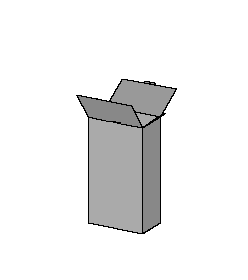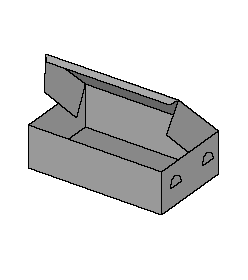Folding Cartons
From DT Online

Folding Cartons are the familiar boxes in which chocolates and breakfast cereals are packed.
They are the packaging containers which ultimately hold the goods. Cartons protect the contents. They and also help sell the product by being attractively designed and printed to inform the customer about the contents.
Cartons are usually made from Carton Board, stamped out to standard net designs.
Cartons are often packed in corrugated board cases to protect them during transport.
Standard codes have been developed to provide descriptions of fibreboard case constructions which are internationally understood. The net for each standard carton design is given a reference number. The carton nets used in D&T Online are all based on such standards.
Activity: - open up a number of cartons to see how many are different designs and how many are actually the same basic design with some dimensions changed.
DIN 55 429, Pt. 1 and the FEFCO/ASSCO Code (international shipping package code) describe the internationally used designs, styles and delivery forms of cartons made from cardboard, millboard and corrugated board. The designs and styles have been defined by ASSCO (Association Européenne des Fabricants de Caisses d’Expédition en Carton Compact), FEFCO (Fédération Européenne des Fabricants de Carton Ondulé) and the ECMA (European Carton Makers Association).

One Piece Folding Cartons
One piece cartons include slotted-type boxes with stitched, taped or glued joints on the main body and top and bottom flaps. They can be stored flat, ready to use, and close using the flaps provided. They are very commonly used for packaging products such as cereals, tea, and detergents. They can be made satisfactorily from board which is 250gsm or greater.
Two Piece Folding Cartons
Cartons can have separate lids, bases or telescopic sleeves.Lids or bases for cartons can be provided by producing a second net in which the LENGTH and the WIDTH are increased by twice the THICKNESS of the material. The HEIGHT can remain the same or can be reduced to suit user requirements.